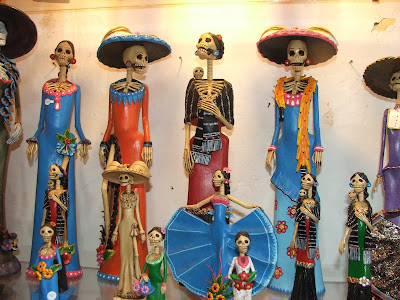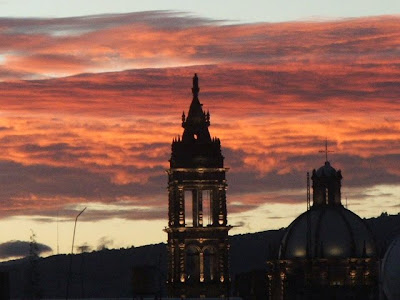 He STILL loves to sit on our heads! He grooms and grooms our heads, leading us to wonder if there is a market for "opposum mousse."
He STILL loves to sit on our heads! He grooms and grooms our heads, leading us to wonder if there is a market for "opposum mousse."Little Milo showed up courtesy of our most precious cat Millie, who, despite her diminutive size, is an expert mouser. When I saw him on the floor just inside our front door, I thought he was another mouse "gift" and prepared to take him by the tail and dispose of him (these mouse gifts are always deceased.) But he moved. And when I took a closer look, I realized he didn't look like a mouse. "Jerry!" I called. "We have a opossum!"
How to save this tiny opossum? We started by giving him a cc of evaporated milk through a hypodermic syringe. He graduated to 5 ccs at a time. I scoured the internet for recipes for "opossum formula" and actually found loads of information - there are lots of eccentric people like us out there, who love opossums. We were continually amazed that Milo was surviving, and I especially credit a kind man named Stephen Lyn Bales, a naturalist from Knoxville, Tennessee, who gave us much good advice on feeding him.
Soon, he was growing and gaining weight...the first time we weighed him, he topped the scales at about 25 grams. He now weighs about two kilos.
We've learned alot of interesting things about opossums since Milo arrived. Most of all, we learned that opossums are sweet, gentle, affectionate creatures. That hissing thing they do? Purely defensive. If they get really cornered, they never attack - they just fall over "dead", which Milo has done a few times when he's scared. Very impressive.
He is an omnivore (eats everything) , and likes dry cat food as his staple diet. He also eats fruits and vegetables, but his favorite treat is a freshly caught beetle - too bad that there are not many of them this time of year (too chilly). Neither the dogs or the cats scare him, which is why we can never release him. He'd rather have a snuggle than a banana. He is learning to go for walks with a halter and leash (and yes, our Mexican neighbors think we are "loco", but they have known that for years.)
We feel special, having Milo as our pet...opossums only live about three years (even in captivity), so we will just enjoy each day with Milo the Magnificent.
















































